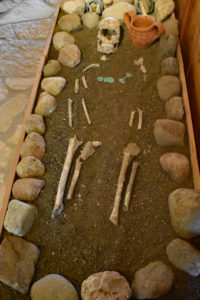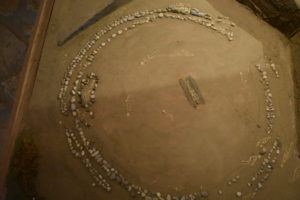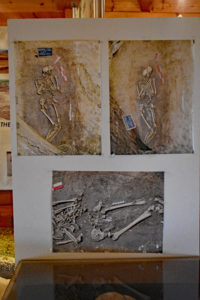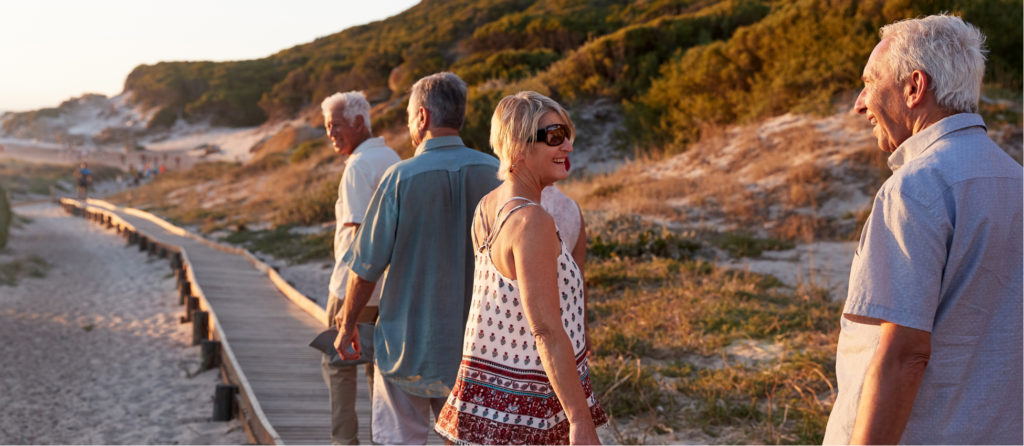The Tumulus of Kamenica are located just outside “Korça”:https://www.silvertraveladvisor.com/review/attraction/200720-review-sight-seeing-in-kor-a and we visited on route to our next stay in south east Albania, Përmiti.
Having driven down a short track, we found the site, which to be fair, required a pretty strong imagination. In the grassy field we could just make out the three circles of low stone, but it wasn’t possible to get very close and it would have been easy to pass by without a second thought.
An information board at the entrance said we were visiting “one of the representative monuments of the prehistory of Albania and a unique site. It is the largest monument of its kind discovered and excavated in the country and carries more or less an eight-century long history”.
The visitors centre was closed, perhaps because it was still early, but a lady from a house across the road approached, handed me a red rose, and opened up. Inside were several numbered exhibition boards in both Albanian and English with lots of interesting information.
The site, from between the 13th and 6th centuries BC, had survived agricultural use of the land until 1960. It was subject to severe looting between 1997 and 1999 which gave rise to a large-scale project between 2000 and 2007 to secure artefacts. This is the largest excavated site in the Balkans with 420 skeletons discovered. Of the bodies found, 326 were adults which had been categorised as young adults, middle aged, older or indeterminate. Bearing in mind infant mortality rates at the time, archaeologists were surprised not to find more children’s remains. They arrived at two theories: their bones were not as well preserved or there was a cultural decision to bury them elsewhere. As well as burials, cremations had also taken place either in the tumuli or outside with the ashes being placed in pots inside.
As well as the bodies, 3,500 archaeological objects or ‘grave goods’ were found. These were either pottery items or metallic (bronze, silver and gold), bone, glass or stone items and there were displays of all.
Having carried the rose around the museum, I had the dilemma of what to do with it and whether or not I should give the lady a tip. I decided to leave her a 100 Lek and discretely left the rose in an urn.
There were books on display, but none in English and it appeared as though money had run out for further excavations.
Whilst this was a somewhat interesting diversion on route, I wouldn’t have wanted to have made a special journey. The information boards suggest it is aimed more at an educational audience than pure tourists.










